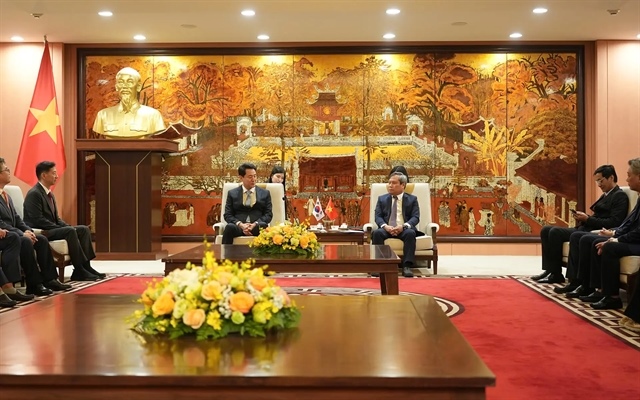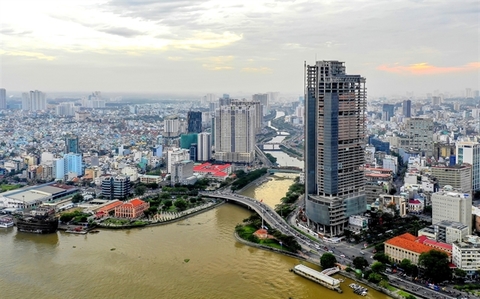Premium or not? Let the residents decide
Premium or not? Let the residents decide
After a series of conflicts at “premium” apartment complexes, it seems like homebuyers and developers in Vietnam have learned many great lessons for their own.
Problems of classification
From our observations, there was at least one new conflict every month in 2017 at apartment complexes that are classified as “premium” in Vietnam. The complexity and of these conflicts grew year after year as well.
In the past, conflicts at premium apartments such as Keangnam Hanoi Landmark Tower, Sky City Tower Hanoi or Parkview Residence often stemmed from issues of public versus private possessions or late handovers. However, in 2017, most conflicts were over project quality issues and exaggerated advertising problems. Another difference is that in the past most residents only submitted formal complaints to the local authorities—nowadays they choose to go out in protest or hang banners outside the buildings, as exemplified by the cases of Ho Guom Plaza (Hadong District, Hanoi) or Mipec Riverside (Long Bien District, Hanoi).
Exaggerated advertising was such a huge problem that the Ministry of Construction’s Housing and Real Estate Market Management Agency had to issue a warning for developers who call their projects “premium” without any evidence to back it up. Other misleading phrases include “green urban areas,” “eco-friendly zones” or “A-class apartments.”
According to Nguyen Truong Luu, chairman of the Ho Chi Minh City Association of Architects, flowery words such as premium, super-premium, luxury or high-class have been terribly misused by many developers for marketing gimmicks. The important thing is that these apartments do not live up to all of the exaggerated advertisements.
Tran Ngoc Chinh, chairman of the Vietnam Urban Planning and Development Association and former Deputy Minister of Construction, said that false claims are an alarming reality in Vietnam. The market has no official standards to classify real estate projects and too many “premium” buildings mean an oversupply and speculation instead of a match between supply and demand.
“The authorities have not built any transparent criteria to classify “premium” products. This is a big mistake in my opinion. Most consumers now use pricing as the sole criterion for classification, which is hugely inadequate. A premium or high-class apartment should satisfy a great deal of requirements, including its own interior design and facilities. Moreover, it has to blend well with the surroundings and provide comprehensive facilities, such as parks, shopping malls or swimming pools,” said Chinh.
Setting A new standard
According to Michael Piro, director of Indochina Strategic Services, the market is currently divided into two groups: the pioneers and the followers. Most foreign and major domestic developers are pioneers thanks to their large financial budget, international experience, and higher levels of creativity. This explains why developers in this group often build premium real estate projects, as they have various ground-breaking ideas that can set them apart from the competition.
Meanwhile, leaders of Hai Phat Group said that apartments have to satisfy the market demand instead of focusing on the “premium” label. Whether a project is premium or not should be decided by the residents themselves after moving in, as residents are the only judge of whether the apartment is worth their investment or not. This follows the rules of the market economy, which means the market will make its own decision, not the authorities.
“I believe that a premium project should have sufficient space for buildings, low construction density, and a focus on public spaces. Residents are entitled to a relaxing environment as they come home each day from work, and they should be able to enjoy various facilities and services that the apartment can offer. This will improve their quality of life as well as the reputation of the project,” said a Hai Phat Group representative.
In a similar vein, Nguyen Hoai An, director of Professional Services at CBRE Vietnam’s Hanoi Branch, said that any premium apartment has to satisfy various requirements, ranging from the reputation of developers and contractors to location, construction quality, and many more. In particular, as the market is becoming digitalised, premium buildings need to set themselves apart by having smart applications for operations and management.
According to An, in the past most developers paid little attention to public space in apartment complexes, as they wanted to reduce construction costs and maximise profit. Nowadays, the case is different. If developers want to beat competition and satisfy homebuyers’ strict requirements, they must focus on providing an inviting and efficient public space, one that has great facilities, good ventilation and lighting. Residents in apartment buildings must feel like they are living in a big villa.
“In the age of digitalisation and globalisation, home is not just a place to live. It is also where residents express their individuality and sense of aesthetics. To respond to these changing needs, developers must take notice of their building design and the surrounding facilities,” said An.



















